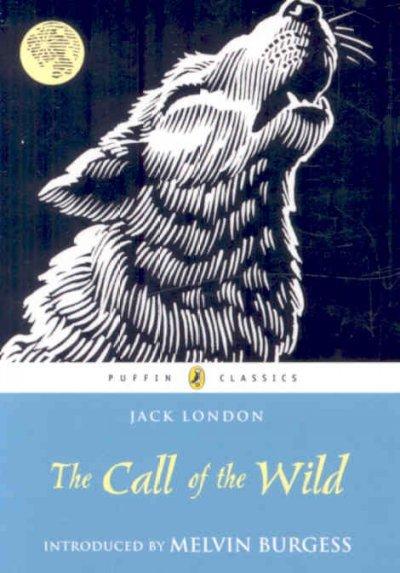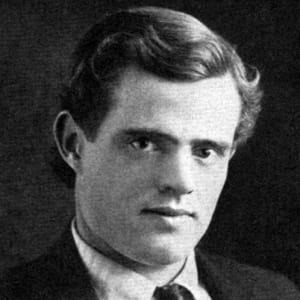The Call of the Wild Summary
6 min read ⌚
 Hush!
Hush!
Can you hear that howl?
It’s “The Call of the Wild.”
And it’s calling for Buck.
Who Should Read “The Call of the Wild”? And Why?
“The Call of the Wild” has been deemed “a mordant parable” by E. L. Doctorow and “a beautiful prose poem” by Maxwell Geismar.
Meaning – it’s timeless, it’s lyrical, it’s unforgettable.
And everyone should read it: especially children and people who like dogs and nature.
Not to mention those who feel as if they don’t belong here.
 Jack London Biography
Jack London Biography
Jack London – born John Griffith Chaney – was an American novelist and journalist, one of the very first authors in history to gain international fame and earn a more luxurious living from writing.
A realist by call, he is also valued as an important precursor of science fiction, with one of his short stories in the genre, “The Red One,” a frequently anthologized one.
He is, however, most famous for his Klondike Gold Rush novels – “The Call of the Wild” and “The White Fang” – and his socially engaged literary works (London was a staunch socialist), such as the dystopian novel “The Iron Heel” (which influenced George Orwell’s “1984”)
Plot
Jack London’s beloved “Call of the Wild” begins with an epigraph: a stanza from John Myers O’Hara’s “Atavism”:
Old longings nomadic leap,
Chafing at custom’s chain;
Again from its brumal sleep
Wakens the ferine strain.
We quote it because it outlines pretty much all of the major themes in this book – as you will see for yourself in 12 minutes.
The story proper opens with Buck, a powerful St. Bernard-Scotch Shepherd, living happily in the “sun-kissed” Santa Clara Valley in California, as the spoilt pet of the wealthy Judge Miller and his picture-perfect family.
However, one day, Manuel (Judge Miller’s gardener’s assistant), in an attempt to finance his gambling addiction, steals Buck and sells him.
Our protagonist is shipped to Seattle – but he is ill-treated and starved during the journey, so the moment he is released, he attacks his overseer, the “man in the red sweater.”
However, this man in the red sweater isn’t Judge Miller, so he teaches Buck the “law of the club,” hitting the dog until Buck backs off.
Afterward, Buck is sold to François and Perrault, French-Canadian dispatchers, who take Buck to Klondike, Yukon, which gave the name of a famous gold rush for a reason.
So, Buck is trained to become a sled dog.
During the process, Buck also learns the laws of the pack society and develops a winter survival skillset. He also develops a rivalry with the vicious lead dog of the pack named Spitz.
After a while, Buck beats Spitz in a gruesome fight and, once Spitz is finished off by the rest of the dogs, Buck becomes the new leader of the team.
Once they reach Dawson, François and Perrault are given new orders from the Canadian government, and they sell the team to a Scottish half-breed man.
He is also working for the mail service, but, under him, the dogs are tasked with carrying much heavier loads.
This takes the toll on a husky named Dave, who becomes sick and is eventually shot.
Afterward, Buck and the team change ownership once again, this time falling into the hands of a trio of American gold hunters: Hal, Charles, and Mercedes.
Inept and inexperienced, the three overfeed the dogs when there is an abundance of food which results in starving them afterward when the food eventually runs out.
While journeying, they happen upon a man named John Thornton, who is everything they are not: skilled and smart.
He warns the trio of the danger they are facing if they continue ahead to the river.
However, Charles, Hal, and Mercedes are not really interested in heeding his advice, so they try marching on.
However, Buck – sensing the danger ahead – refuses to move on and lies still in the snow.
Hal beats Buck, but, as he watches the scene disgusted, Thornton realizes how an extraordinary dog Buck is.
So, he hits Hal with the butt of his ax and releases Buck, telling the trio he intends to keep him.
After a brief argument (needless to say, Hal is not so pleased with Thornton’s actions), the American trio leaves and tries crossing the river against Thornton’s good advice.
As he had warned them, this leads to the breaking of the ice, and Hal, Charles, and Mercedes drown in the river – just as the sled and Buck’s entire pack.
Thornton takes care of Buck, nursing him back to health, and Buck grows fond of his new master.
He has an opportunity to prove his devotion very soon, saving Thornton from drowning and attacking a man who tries to start a fight with him in a bar.
More importantly, when a bonanza king named Matthewson wagers against the dog’s strength and devotion, Buck proves him wrong and his master right.
He successfully breaks a 1,000-pound sled free from the frozen ground and manages to pull it for 100 yards, winning Thornton $1,600 in gold dust, which amount to staggering $40,000 in today’s money!
Thornton uses the money to pay off his debts but doesn’t want to give up on finding gold himself just yet.
After his extraordinary feat of strength and devotion, a man offers him a large sum to buy Buck, but Thornton refuses, not wanting to part his ways with his beloved dog.
In the meantime, Buck starts exploring the wilderness, and he senses a growing attraction to the wild once he starts socializing with a timber wolf in the vicinity of the campsite Thornton and his friends Pete and Hans are setting.
Buck even has an option to join the wolf pack, but, as much as he feels it’s the right thing to do, he decides to stay – on account of his loyalty to Thornton.
However, once Back returns to the campsite, he discovers that his master – as well as his friends Pete and Hans – are dead, savagely murdered by a group of Yeehat Indians.
As the Indians start dancing around the wreckage, Buck attacks them, ripping the throat of their chief. He causes some confusion and chaos, after which the Yeehats ran away.
Afterward, Buck himself is attacked by some wolves.
He fights them too – and manages to win this fight as well!
However, once he realizes that the wolf he had been socializing with is part of the same pack, Buck decides to follow them and finally responds to the call of the wild.
The Call of the Wild Epilogue
“And here may well end the story of Buck,” writes London.
Yet – it doesn’t.
Since some time later, the Yeehats start noticing some change in the breed of the timber wolves, “for some were seen with splashes of brown on head and muzzle, and with a rift of white centring down the chest.”
And, even worse, they start noticing that more and more hunters leave their camps but fail to return to them, as many tribesmen are found “with throats slashed cruelly open and with wolf prints about them in the snow greater than the prints of any wolf.”
The one to blame?
The Ghost Dog, the frightening creature who attacked them once in the Valley, and who, unbeknown to them, comes back there once a year to mourn the death of his master.
“But he is not always alone,” remarks London.
When the long winter nights come on and the wolves follow their meat into the lower valleys, he may be seen running at the head of the pack through the pale moonlight or glimmering borealis, leaping gigantic above his fellows, his great throat a-bellow as he sings a song of the younger world, which is the song of the pack.
Like this summary? We’d like to invite you to download our free 12 min app, for more amazing summaries and audiobooks.
“The Call of the Wild PDF Quotes”
Love, genuine passionate love, was his for the first time. Share on X
A man with a club is a law-maker, a man to be obeyed, but not necessarily conciliated. Share on X
He was sounding the deeps of his nature, and of the parts of his nature that were deeper than he, going back into the womb of Time. Share on X
There is an ecstasy that marks the summit of life, and beyond which life cannot rise. And such is the paradox of living, this ecstasy comes when one is most alive, and it comes as a complete forgetfulness that one is alive. Share on X
They were not half living, or quarter living. They were simply so many bags of bones in which sparks of life fluttered faintly. Share on X
Our Critical Review
An allegory on par with Ernest Hemingway’s “The Old Man and the Sea,” “The Call of the Wild” is certainly a classic so memorable that – to quote editor Franklin Walker – it “belongs on a shelf with ‘Walden’ and ‘Huckleberry Finn.’”
Needless to say, there are not many books on that shelf.
There never will be.
A masterpiece.
Emir is the Head of Marketing at 12min. In his spare time, he loves to meditate and play soccer.


 Jack London Biography
Jack London Biography




